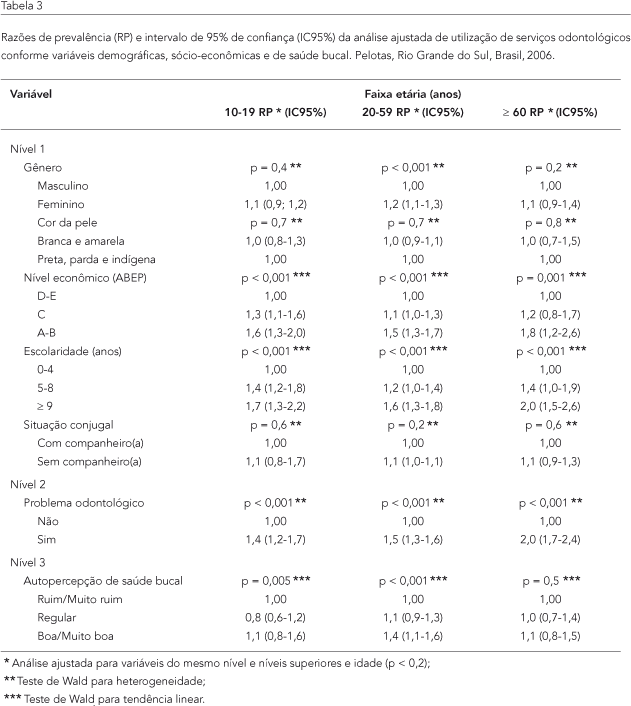The aim of this study was to estimate patterns of dental services use in a medium-sized city in southern Brazil. A population-based cross-sectional study was conducted in a sample of 4,226 individuals aged 10 years and older. Poisson regression analysis was used to identify associated factors; 50.9% (95%CI: 49.3-52.4) of the sample had consulted a dentist in the previous year. Dental care attendance rates among adolescents, adults, and elders were 52.2%, 53.6%, and 37.2%, respectively. After adjusting for various confounders, the most important determinants of dental services use were: schooling > 9 years, high socioeconomic status, and self-reported oral health problems. In addition, adolescents and adults that rated their oral health as good showed 10% and 40% higher prevalence dental services use, respectively, when compared with those who rated their oral health as bad. Determining the prevalence of dental services use and users' characteristics can help policymakers plan future measures to make dental care available to population groups with low rates of dental services use.
Dental Health Services; Dental Care; Oral Health




